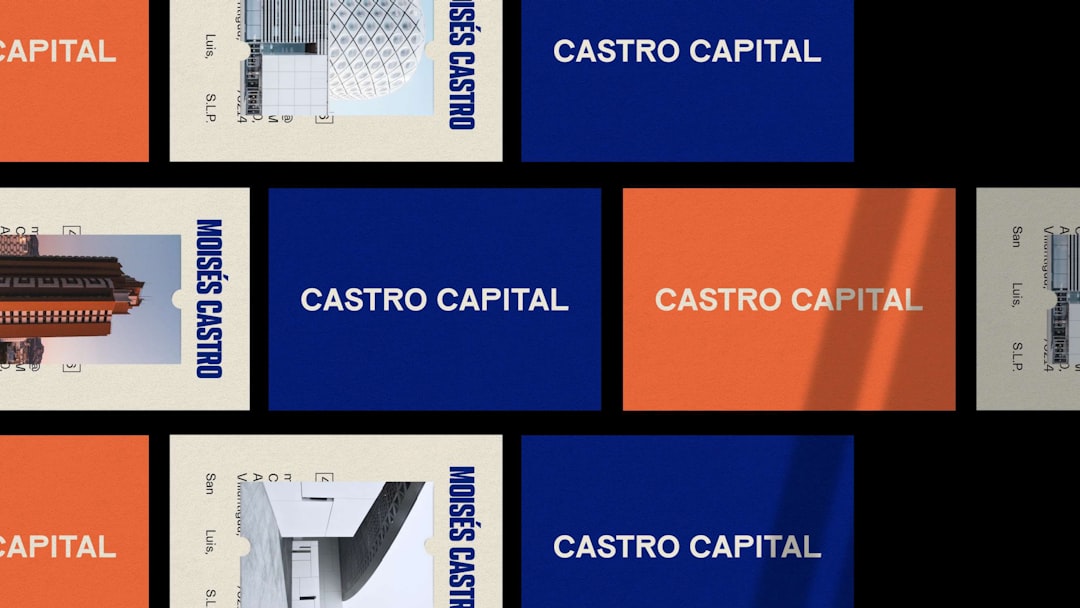Introduction
Embarking on a business venture in the pet care industry can be a thrilling prospect, but it often comes saddled with significant financial implications. Deciding between launching a capital-intensive pet resort, priced at $2–2.5 million, or opting for a mobile pet service with a lower capital expenditure (CapEx), requires careful consideration. By examining the financial dynamics and strategic benefits of each option, entrepreneurs can align their business aspirations with practical investment realities, thus identifying the optimal entry path for sustainable growth.
Understanding Capital Intensity
 Image courtesy: Unsplash
Image courtesy: Unsplash
Defining Capital Intensity in Business
Capital intensity is a critical concept in business, encapsulating the amount of fixed or real capital present in relation to other variables like labor and operational costs. Specifically, it refers to the substantial amount of capital investment required to start, sustain, or expand a business operation. Capital-intensive businesses typically demand substantial upfront investments in equipment, facilities, and technology, needed to achieve scale and efficiency. This high level of expenditure can dictate the strategic direction of a company, often serving as a barrier to entry for new players. An understanding of capital intensity is essential for franchisors considering expansion paths or assessing new market opportunities.
Common Challenges Posed by High Capital Investments
Engaging in capital-intensive ventures introduces a spectrum of challenges that can strain financial and operational resources. Some of the most significant include:
– High Initial Costs: Large capital outlays can exhaust available funds, impacting liquidity and requiring significant financial planning.
– Operational Flexibility: Once committed to a high capital investment, a business may find it difficult to pivot or adapt to market changes without incurring additional costs.
– Return on Investment (ROI) Timelines: Recovering the initial investment can take years, and profitability projections are often reliant on stable market conditions.
– Equity and Debt Financing: To manage these costs, businesses might seek financing, which can introduce financial risks or dilute ownership.
Realistically assessing these challenges is vital, particularly for emerging franchisors who might be tempted by the potential gains associated with high capital intensity but are wary of the risks it entails.
The Spreadsheet Flashing Warnings: Interpreting Financial Indicators
The cornerstone of navigating high capital intensity lies in diligently interpreting financial indicators. Spreadsheets provide valuable insights into the viability and health of a business proposition, signaling when caution is needed. Key indicators include:
– Net Present Value (NPV): Negative NPV suggests the project may not yield sufficient returns to justify the investment.
– Internal Rate of Return (IRR): A lower IRR compared to industry benchmarks raises red flags about long-term profitability.
– Cash Flow Projections: Inconsistencies or negative projections indicate potential liquidity issues down the line.
– Break-even Analysis: Extended timelines to reach a break-even point can warn of unsustainable operational conditions.
Analyzing these indicators helps franchisors make informed decisions, promoting viable growth strategies that align with their risk tolerance and business objectives.
The Case of the $2–2.5M Pet Resort
Costs and Long-term Investments
Investing in a brick-and-mortar pet resort with capital requirements of $2–2.5 million exemplifies a quintessential capital-intensive undertaking. The majority of these funds are often allocated towards:
– Real Estate and Construction: Existing facilities might require extensive modifications or completely new constructions to meet operational standards.
– Equipment and Technology: High costs associated with state-of-the-art pet care equipment, climate controls, and security systems are non-negotiable.
– Licensing and Compliance: Securing necessary licenses ensures the resort meets all regulatory requirements, which are often costly and complex.
Beyond these initial costs, ongoing expenses associated with maintenance and staff salaries make it imperative to secure a sustainable and profitable business model.
Potential Profitability and Market Demand
Despite the significant upfront costs, pet resorts can present lucrative opportunities, buoyed by the pet care industry’s remarkable growth. The American Pet Products Association reports that expenditure on pets in the US reached approximately $136.8 billion in 2022, a figure forecasted to increase. However, such potential profitability hinges on a strategic location, a sterling market reputation, and exceptional service quality.
– Market Research: Comprehensive studies on local demand and customer preferences can unearth valuable insights for gaining competitive advantages.
– Differentiation: Offering unique amenities, from luxury suites to specialized pet fitness programs, may attract a discerning clientele willing to pay premium prices.
Attaining this profitability requires not just meeting industry standards but exceeding them, aligning service offerings with evolving consumer expectations.
Risk Analysis: What Could Go Wrong?
While the financial allure of a pet resort is compelling, the venture is not devoid of risks. Factors that could undermine success include:
– Market Saturation: In areas with numerous competitors, distinguishing the pet resort from others becomes critical but challenging.
– Economic Fluctuations: Changes in the economy can affect discretionary spending on pet care, impacting revenue streams.
– Regulatory Changes: New regulations or compliance issues could translate into additional unforeseen expenses.
A thorough risk analysis aids franchisors in not just foreseeing these challenges but also devising robust strategies to mitigate them, ensuring the long-term viability of their investment. This process underscores the need for precise execution and strategic foresight when embracing capital-intensive business models.
Mobile Pet Services: A Lower-CAPEX Alternative
When the allure of opening a grand pet resort encounters the harsh reality of capital intensity, it’s essential to explore alternative entry ramps into the pet care industry. Mobile pet services present a compelling lower-CAPEX option, offering unique advantages in today’s competitive marketplace.
Flexibility and Ease of Entry
Mobile pet services appeal to aspiring entrepreneurs largely due to their flexibility and relatively straightforward entry process. The startup costs for a mobile pet service are significantly lower than those associated with building a brick-and-mortar pet resort, which can range from $2 million to $2.5 million. With a mobile setup, entrepreneurs can start with a well-equipped vehicle and some essential grooming or care tools, which drastically reduces the initial financial burden.
– Cost Efficiency: Initial investments may undercut traditional setups by up to 80%, opening up the business prospects to a wider array of investors.
– Regulatory Compliance: Mobile services often face less stringent zoning and real estate requirements, saving time and costs associated with obtaining these approvals.
This ease of access allows business owners to rapidly test the waters of the market, refine their offerings, and expand their client base without the significant overhead.
Scalability and Growth Potential
Scalability becomes a crucial aspect when considering the long-term viability of any business endeavor. Mobile pet services provide ample room for growth in several areas:
– Geographic Expansion: Unlike a fixed location, a mobile service can broaden its geographic coverage with minimal additional investment. By acquiring more vehicles, the business can extend its reach to new neighborhoods and communities.
– Service Diversification: As client needs evolve, mobile pet services can easily adapt by introducing new offerings, such as dog walking, in-home pet sitting, or mobile vet services, without the need for extensive new infrastructure.
The ability to scale efficiently ensures that mobile pet services can grow with demand, thus optimizing revenue potential.
Lower Risks and Adaptability to Market Changes
A significant advantage of mobile pet services is the reduced financial risk compared to high-capital ventures like pet resorts. This business model allows for swift adaptation to market trends and fluctuations:
– Market Responsiveness: If a particular area sees decreased demand or becomes oversaturated, a mobile service can quickly shift focus to more lucrative regions.
– Operational Flexibility: With lower fixed costs, businesses face reduced pressure during economic downturns, enabling them to maintain profitability even in challenging times.
The capacity to remain agile in a changing market positions mobile pet services as a resilient option, capable of enduring industry shifts with greater ease.
Choosing the Right Entry Ramp
 Image courtesy: Unsplash
Image courtesy: Unsplash
While mobile pet services offer numerous advantages, selecting the right business path ultimately depends on personal circumstances and goals. It is crucial to evaluate several factors to make an informed decision.
Assessing Personal and Financial Readiness
Before diving into the pet services industry, assessing both personal interests and financial readiness is essential:
– Financial Assessment: Conduct a thorough analysis of available capital, projected income, and potential funding sources. This helps in understanding if your finances support a high-CAPEX option like a pet resort, or necessitate a more budget-friendly choice.
– Skill Assessment: Evaluate your current skills and willingness to acquire new ones. Mobile services demand a hands-on approach, often requiring expertise in grooming, handling pets, and operating machinery.
These assessments provide clarity on whether you are prepared to commit to an option with greater financial risks or prefer a stepping-stone approach.
Aligning Business Choice with Long-term Goals
Understanding your long-term business and personal goals can significantly influence your decision:
– Vision for Scale: If your vision includes scaling swiftly, a mobile pet business might align better with your aspirations.
– Lifestyle Considerations: Consider how each business model impacts your lifestyle. A mobile service offers flexibility that might cater better to those seeking more personal time.
Ensuring alignment with your goals ensures sustained motivation and satisfaction in your entrepreneurial journey.
Tools and Strategies for Making an Informed Decision
Making a sound choice requires leveraging various tools and strategies:
– Market Research: Conduct exhaustive market research using surveys, industry reports, and competitor analysis to understand trends and demand projections.
– Financial Modeling: Utilize financial modeling to project revenues, fixed and variable costs, and profit margins for different business scenarios.
– Consultation: Seek advice from industry experts, mentors, and financial advisors to gain diverse perspectives and uncover potential blind spots.
Equipped with data-driven insights and strategic guidance, you can make a decision that maximizes your chances of success and aligns with both your entrepreneurial vision and market conditions.
In conclusion, mobile pet services stand out as a low-capital, high-flexibility alternative for those daunted by the initial outlays of a traditional pet resort. By carefully evaluating personal readiness, aligning business models to long-term goals, and employing strategic decision-making tools, entrepreneurs can confidently determine their optimal path in the pet care industry.
Conclusion
Navigating the road to entrepreneurship in the pet care industry requires a delicate balance between ambition and financial prudence. For many aspiring business owners, the choice between establishing a high-capital pet resort and opting for a cost-efficient mobile pet service is pivotal. While a pet resort offers potential for high returns, its substantial capital requirements can be prohibitive.
– Pet Resorts: They offer expansive facilities and services but come with high startup costs—often ranging between $2–2.5 million. This route demands robust financial backing and a thorough risk assessment to ensure sustainability.
– Mobile Pet Services: These ventures are more accessible, requiring lower capital investment and offering flexibility. They allow entrepreneurs to enter the market without extensive financial burdens, positioning them to adapt quickly to changing market demands.
Ultimately, the decision should align with your strategic objectives and financial reality. Consider your resources, market potential, and personal aspirations. By doing so, you’ll not only optimize your initial investment but also set the stage for sustainable growth in the pet care sector.


